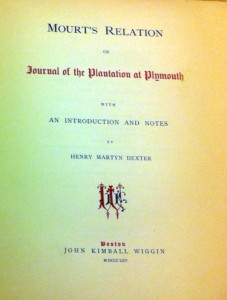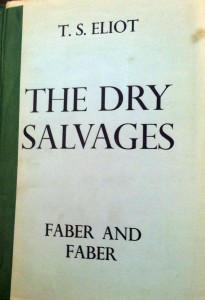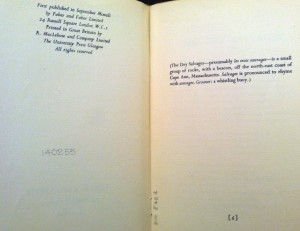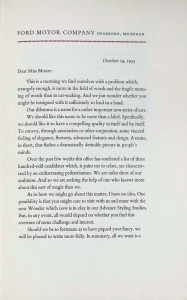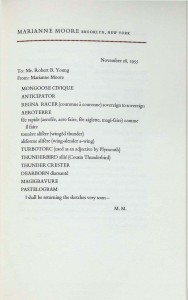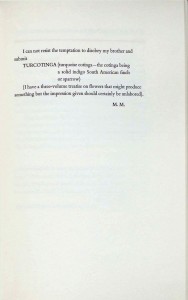[Posted by Rene Dion for “America Collects Itself: From Colony to Empire (AMST 838/438)]
 In 1848 the Seneca Falls Convention was held in New York State. This gathering was unlike any other, as people came to discuss the social, civil, and religious rights of women. For the first time in history the well-established patriarchy of America was being publicly challenged. Two years later, the first in an annual series of National Women’s Rights Conventions took place in Worchester, Massachusetts. At the same time, not too far from there, Nathaniel Hawthorne was giving life to one of literature’s most famous feminist characters, Hester Prynne of The Scarlet Letter. Set in the harsh Puritan community of seventeenth-century Boston, this tale of an adulterous affair that results in an illegitimate birth reveals themes of legalism, sin and guilt. Although publicly shamed and ostracized, Hester Prynne gains self-knowledge, and her ultimate restoration to emerge as the” first true heroine of American fiction.”
In 1848 the Seneca Falls Convention was held in New York State. This gathering was unlike any other, as people came to discuss the social, civil, and religious rights of women. For the first time in history the well-established patriarchy of America was being publicly challenged. Two years later, the first in an annual series of National Women’s Rights Conventions took place in Worchester, Massachusetts. At the same time, not too far from there, Nathaniel Hawthorne was giving life to one of literature’s most famous feminist characters, Hester Prynne of The Scarlet Letter. Set in the harsh Puritan community of seventeenth-century Boston, this tale of an adulterous affair that results in an illegitimate birth reveals themes of legalism, sin and guilt. Although publicly shamed and ostracized, Hester Prynne gains self-knowledge, and her ultimate restoration to emerge as the” first true heroine of American fiction.”
Hawthorne spent his college years building friendships with the likes of Henry Wadsworth Longfellow, future naval commander Horatio Bridge and future president Franklin Pierce. After graduating he began to spend much of his time reading, writing and researching his family’s Puritan past. He published his first novel Fanshawe anonymously but did not receive much attention. Eventually, his school mate Bridge convinced him to publish under his own name and without Hawthorne’s knowledge put up money to guarantee any losses with the publisher, Samuel G. Goodrich. Twice-Told Tales, a short story collection published in 1837, was a success and received a few favorable reviews including one from his friend Longfellow.
 Hawthorne continued to write short stories for publication but the income left much to be desired. He and his wife Sophia moved to Salem, Massachusetts to live with Hawthorne’s mother in 1845. He began working at the Salem Custom House but this career was short lived as Hawthorne was let go from the job just three years later. Financially unfortunate but it left the window open for him to take the time to write again. By 1850 he had completed The Scarlet Letter which included a preface that refers to his three-year tenure in the Custom House and makes several allusions to local politicians, who did not find appreciation in the acknowledgement. When he delivered the manuscript in February 1850, Hawthorne said “some portions of the book are powerfully written”, but also added that it would probably not prove to be popular, although he did hope for such. When he read the final part of the novel to his wife, he told a friend that “it broke her heart … which I look upon as a triumphant success.”
Hawthorne continued to write short stories for publication but the income left much to be desired. He and his wife Sophia moved to Salem, Massachusetts to live with Hawthorne’s mother in 1845. He began working at the Salem Custom House but this career was short lived as Hawthorne was let go from the job just three years later. Financially unfortunate but it left the window open for him to take the time to write again. By 1850 he had completed The Scarlet Letter which included a preface that refers to his three-year tenure in the Custom House and makes several allusions to local politicians, who did not find appreciation in the acknowledgement. When he delivered the manuscript in February 1850, Hawthorne said “some portions of the book are powerfully written”, but also added that it would probably not prove to be popular, although he did hope for such. When he read the final part of the novel to his wife, he told a friend that “it broke her heart … which I look upon as a triumphant success.”
Despite complaints from certain people of Salem of being slandered in the introduction and some critics’ objections to the novel’s shocking subject, it was immediately hailed as a work of genius and became known as “America’s first major novel” (American National Biography). A 2,500-copy second edition of The Scarlet Letter included a preface by Hawthorne dated March 30, 1850, that stated he had decided to reprint his introduction “without the change of a word… The only remarkable features of the sketch are its frank and genuine good-humor.”
The Watkinson Library currently houses three 1850 editions of The Scarlet Letter, two American publications and one from England. To assist in distinguishing them from each other, I was referred to Jacob Blanck’s Bibliography of American Literature (v.4), also a part of the Watkinson’s collection. Overall it provides more than 37,000 records of literary works from American writers from the American Revolution to 1930. James L. Harner, who wrote the resource book Literary Research Guide, refers to it as “one of the monumental bibliographies of the twentieth century.” In it I found a flawless description of the first edition with basic information including the publishers (Boston: Ticknor, Fields and Reed) and further specifics including the type of cloth the cover was made from as well as the kind of paper used (“yellow end papers, cream end papers”). The publisher’s list on page 4 is dated March 1, 1850.
The second edition by the Boston publishers was “extended by the addition of a ‘Preface to the Second Edition’ dated March 30, 1850.” where Hawthorne stated he wouldn’t change a word regarding the Custom House chapter, the semi-autobiographical introduction.
The last version of The Scarlet Letter that the Watkinson holds is a second edition printed in London 1850 by William Paterson. It was not listed in Blanck’s bibliography. Slightly smaller in height and owning a black rather than brown cover it was easily discernible from the American versions. But once it is opened, exactly the same classic novel sits inside.
The Scarlet Letter received instant and enduring success because it addressed spiritual and moral issues from a uniquely American perspective. In 1850, adultery was a scandalous subject, but because Hawthorne had the support of the New England literary community, it became accepted as suitable for the masses. The Scarlet Letter is widely considered to be Hawthorne’s magnum opus. This psychological tale of passion, revenge and redemption still resonates with readers today.






